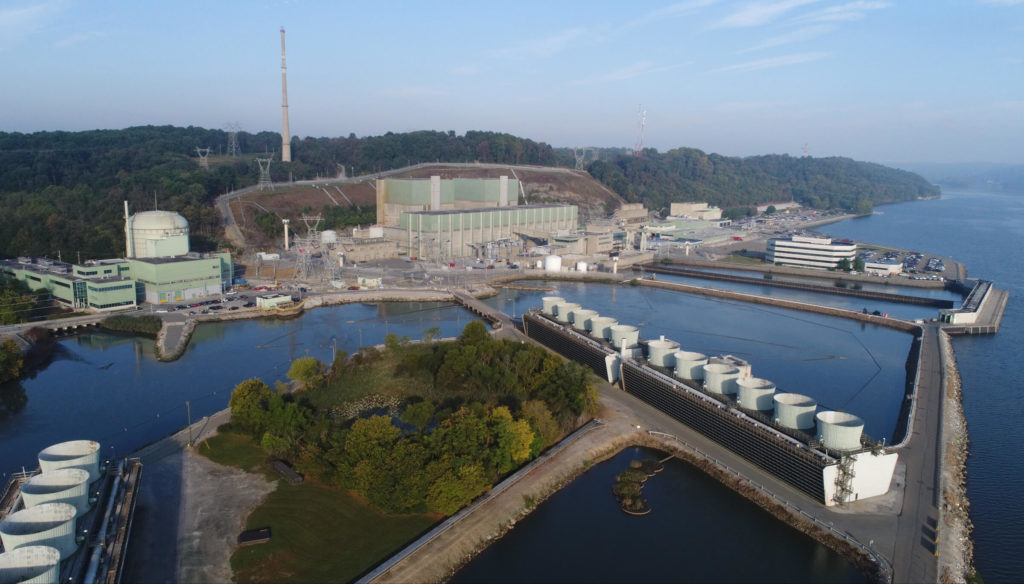EPRI Informs Nuclear Power Industry on Managing Aging Plant Components
Eighty years ago, Superman made his first appearance in DC Comics. In 2018, Exelon’s Peach Bottom Atomic Power Station, NextEra’s Turkey Point Nuclear Generating Station, and Dominion’s Surry Power Station—all in operation for more than 40 years—submitted license renewal applications to allow operation to 80 years. While Superman and nuclear power aren’t typically thought of together, they clearly share longevity. Superman’s longevity is tied to fan appreciation and ever-changing story lines, while nuclear power’s longevity is tied to its demonstrated safe, reliable performance. Today that is combining with a sustained commitment to addressing technical challenges associated with long-term operations.
Originally licensed to operate for 40 years, the Peach Bottom, Turkey Point, and Surry plants have been granted 20-year license extensions to 60 years. The potential benefits of additional life extensions are significant. For example, a second license renewal would enable Peach Bottom to provide safe, reliable, carbon-free power to more than 2.7 million homes and businesses for an additional 20 years.
In the United States, license renewal applications are submitted to the U.S. Nuclear Regulatory Commission where it’s anticipated to take approximately 18 months for review and approval. The process requires a systematic plant review, identification of degradation mechanisms, and development of aging management programs to support continued safe, reliable operations. Other countries follow a similar process, pointing to the importance of aging management.

“Based on extensive research, we have found no technical barriers to extending the life of nuclear plants out to 80 years and are confident the industry can address any challenges if they arise,” said Sherry Bernhoft, EPRI senior program manager.
Superman and nuclear also have strength in common. Nuclear plants have 4- to 7-foot-thick walls of steel-reinforced concrete that can withstand earthquakes, tornadoes, hurricanes, floods, and many other events. To help maintain this strength and structural stability, nuclear plants implement aging management programs. To inform plant owners on decisions related to plant life extension, EPRI has completed aging management research and developed guidance for concrete, concrete biological shield walls, reactor metal materials, and electrical cables.
Concrete
Concrete structures are susceptible to degradation from irradiation, alkali silica reactions, and other mechanisms. EPRI has recently developed guidance for identifying and evaluating concrete degradation from alkali silica reactions and implementing aging management programs.
“To help transfer our guidance to nuclear plant operators, we created interactive, engaging training videos* covering topics such as degradation mechanisms, developing an aging management program, and more,” said EPRI Technical Leader Sam Johnson.
Concrete Biological Shield Walls
The concrete biological shield wall is susceptible to aging because it is close to the reactor and subjected to radiation and high temperatures. EPRI recently created a step-by-step method for evaluating its ability to provide continued structural support for the reactor pressure vessel.
“It integrates three separate models,” said Emma Wong, EPRI senior technical leader. “The first shows how much concrete is expected to degrade, the second shows the impacts of different loads on the degraded concrete, and the third examines how effectively a degraded concrete biological shield wall can support the reactor pressure vessel.”
Reactor Materials
The older a reactor, the longer the materials have been subjected to radiation, which can affect their structural characteristics. EPRI is conducting engineering analyses of reactor materials and developing new guidance for materials inspections in plants pursuing extended operations.
“For boiling water reactors, we have recently developed inspection and evaluation guidance for reactor vessels’ internal components operating beyond 60 years,” said Robin Dyle, EPRI principal technical executive. “In 2019, we will complete similar guidance for reactor piping and the vessel itself.”
With greater than 60% of the world’s 440-plus nuclear reactors more than 30 years of age, life extension and aging management will remain essential to support safe, reliable operation over the coming decades.
Perhaps in 2074, we’ll be celebrating Superman’s 136th birthday and Peach Bottom’s 100th birthday.
*It is necessary to create an EPRI U account to view this video.
EPRI Technical Experts:
Sherry Bernhoft, Sam Johnson, Emma Wong, Robin Dyle
Additional Resources:
- Long-Term Operations: Aging Management of Concrete Structures Affected by Alkali Silica Reaction
- Alkali Silica Reaction Training Module 1: Introduction Video (It is necessary to create an EPRI U account to view this video.)
- Irradiation Damage of the Concrete Biological Shield: Basis for Evaluation of Concrete Biological Shield Wall for Aging Management
- Irradiation Damage of the Concrete Biological Shield That Utilizes a Neutron Shield Tank: Basis for Concrete Biological Shield Wall for Aging Management
- Irradiation Damage of the Concrete Biological Shield, Example Evaluation of Concrete Biological Shield Wall for Aging Management


